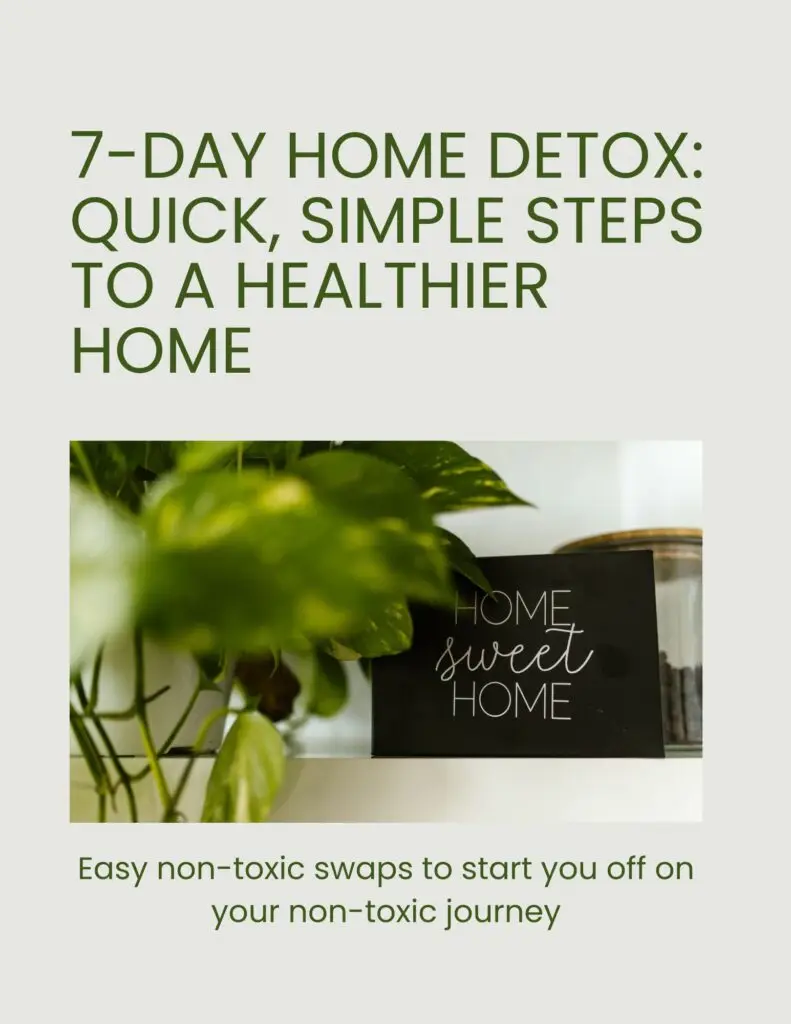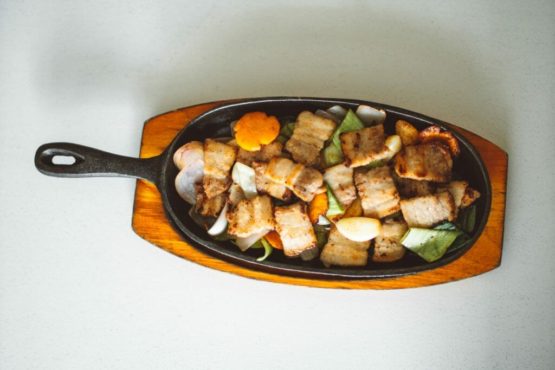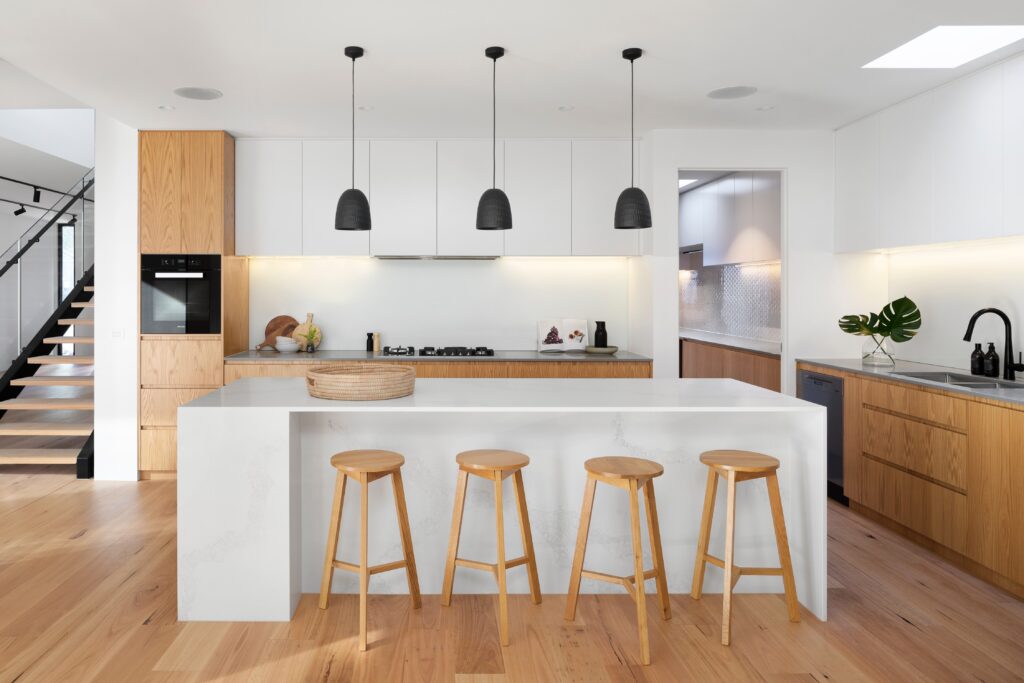Starting with a few small changes can make a big difference—and the kitchen is an ideal place to begin.
Some of the most-used items here have the potential to expose us to unnecessary toxins.
So, let’s just dive right in and skip the fluff! We’re keeping it simple here… why it matters to switch to a non-toxic alternative, what you can use instead, and I will give you some quick action steps to make the transition to a non-toxic kitchen easier.
1. Ditch Plastic Kitchen Food Storage Containers
Why It Matters
Plastic containers, especially when heated, can release chemicals like BPA and phthalates into your food.
Studies link these chemicals to hormone disruptions, increased risk of metabolic disorders, fertility issues, and even certain cancers.
What to Use Instead
- Glass Containers: Safe, durable, and versatile, glass containers won’t leach chemicals into your food. Plus, they’re great for both storing and reheating!
- Stainless Steel Containers: Great for snacks or to pack a lunch. They are also great for kids to take lunch to school because they are light and won’t break.
Quick Action Step
Start by swapping out just a few of your most-used plastic containers with glass or stainless steel.
Over time, you’ll get a good collection going and all the plastic will be gone.
2. Upgrade Your Non-Stick Cookware
Why It Matters
Non-stick cookware often contains chemicals like PFOA and PFAS (also known as “forever chemicals”).
These have been associated with several health issues, including liver and kidney damage, immune system suppression, and developmental delays in children.
What to Use Instead
- Cast Iron: A classic, naturally non-stick option when properly seasoned. It’s perfect for searing and sautéing without harmful chemicals.
- Stainless Steel: Great for general-purpose cooking, stainless steel doesn’t leach harmful substances and lasts for decades.
Quick Action Step
Replace your most-used non-stick pans with a stainless steel or cast iron alternative.
You don’t have to buy a whole set. Just get the pans you use the most. If you are anything like me, you may already have a whole cookware set and only use like two of the pans!
3. Swap Out Plastic Kitchen Utensils
Why It Matters
When exposed to high heat, plastic utensils can release toxins into your food, especially if they’re scratched or worn (we have all had that plastic spatualla that was all funky on the end!).
Long-term exposure to certain plastic components has been linked to hormone disruption, reproductive issues, and even neurotoxicity.
What to Use Instead
- Wood Utensils: Naturally antibacterial and safe at high temperatures, these won’t leach chemicals into food.
- Stainless Steel Utensils: Durable and easy to clean, stainless steel is a great option for a non-toxic kitchen.
Quick Action Step
Start with one or two wooden or stainless steel utensils for high-heat cooking, and slowly replace others as you go. Because, when buying a set, who really uses that spaghetti thing?
4. Choose Non-Toxic Cleaning Products
Why It Matters
Common kitchen cleaners can contain harsh chemicals like ammonia, chlorine, and phthalates, which can irritate the lungs, affect the nervous system, and even contribute to hormone disruption.
These toxins are especially concerning in the kitchen, where food preparation happens on surfaces.
What to Use Instead
- Vinegar and Baking Soda: This natural combo is excellent for cleaning and deodorizing surfaces safely. Add a few drops of lemon or lavender essential oil for a fresh scent.
- Non-Toxic Pre-Made Cleaners: Look for brands that avoid synthetic fragrances, bleach, and ammonia. Many non-toxic cleaners are certified by organizations like “Made Safe” or “Green Seal.”
Quick Action Step
Mix up a spray bottle of vinegar and water (1:1 ratio) with a few drops of your favorite essential oil for an affordable, effective, non-toxic cleaner.
*Side note: don’t use vinegar on granite countertops, it will etch the surface. You can just use soap and water instead.
5. Opt for Safer Cutting Boards
Why It Matters
Plastic cutting boards tend to wear down with use, leaving tiny plastic particles in food over time.
Plastic boards can also harbor bacteria in knife grooves, creating a sanitation concern.
Exposure to microplastics has been linked to hormone disruption and potential impacts on digestive health.
What to Use Instead
- Wood Cutting Boards: Wood has natural antimicrobial properties and is safer on your knives.
Quick Action Step
Start by replacing your most-used plastic cutting board with a wooden. This simple swap reduces that plastic exposure. Plus, wood cutting boards last a super long time!
Final Thoughts on a Non-Toxic Kitchen: Start Small, Think Big
Beginning a non-toxic journey can feel overwhelming but remember—even small swaps can be impactful.
Start with one or two of these easy upgrades, and before you know it, you’ll be creating a healthier, non-toxic kitchen!
Want More Tips? Download the Free “7-Day Home Detox Guide”
Looking to make changes in other areas of your home? My free “7-Day Home Detox Guide” offers simple, low-cost steps to make your home healthier, one day at a time.
Get it here to start building a non-toxic lifestyle that works for you!

Where to Go from Here: Resources to Keep You Empowered
Your non-toxic journey doesn’t have to be a lonely one.
You can stay connected on social media Facebook | Pinterest | Instagram, where I share daily tips, product recommendations, and encouraging messages to keep you inspired on your journey.
And if you’re looking for trustworthy, non-toxic products to add to your routine, my online shop is curated with only the best low-toxic and non-toxic items I personally use and recommend.
Get started:
– Follow on Social Media: Facebook | Pinterest | Instagram
– Shop Curated Non-Toxic Products.


